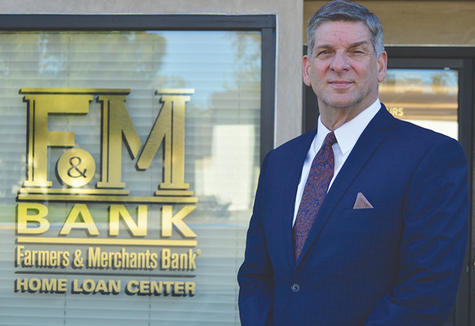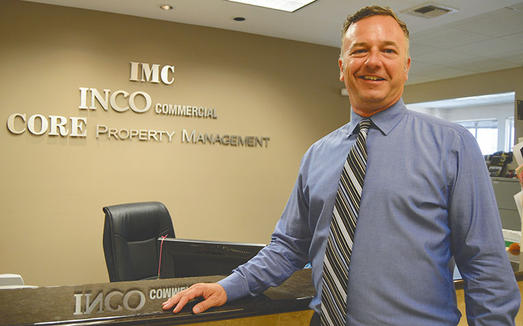Although an improving economy usually triggers increases in interest rates, such has not been the case in the United States over the last couple of years. Financial and real estate experts, as well as economists, agree that continued global uncertainties are keeping rates low and are likely to do so well into 2017.
Low interest rates are putting pressure on demand for residential real estate, both in the single-family and multi-family markets, according to local real estate professionals. Homebuyers are seeking to take advantage of lower home mortgage payments, while investors in apartments hope to capitalize on steady cash flows afforded by lower rates and payments coupled with increasing rental rates.
“For the last couple of years, we have been in an interest rate situation that is very atypical,” Robert Kleinhenz, economist and executive director of research for Beacon Economics, told the Business Journal.

Robert Camerota, senior vice president of residential lending operations for Farmers & Merchants Bank, said he doesn’t expect interest rates to increase significantly in the foreseeable future. (Photograph by the Business Journal’s Larry Duncan)
“Theoretically, interest rates should go up in the U.S. as the economy improves. But that assumes a lot of other things are not changing, one of which is the state of uncertainty around the world,” Kleinhenz explained. “We also know that whenever there are spikes in uncertainty the U.S. is [considered] the safe haven, so a lot of money goes to the safety of the U.S. treasuries and that tends to push interest rates down here.” The recent Brexit vote and uncertainties about China’s economy have been creating this dynamic in 2016, he noted.
Uncertainties about recent events in Europe and China are also making it unlikely that the Federal Reserve will raise its federal funds rate, which is directly tied to interest rates, according to California Association of Realtors (CAR) Economist Jordan Levine. Interest rates for both short-term and long-term loans and mortgages are likely to stay below 4% through the first half of 2017, he said.
Robert Camerota, senior vice president of residential lending operations for Farmers & Merchants Bank, said he doesn’t expect interest rates to increase in the next four to six months unless the U.S. starts to see overwhelmingly positive job gains. “But I don’t anticipate that happening,” he added.
In the short run, low interest rates are going to boost demand for single-family homes, Levine said. “You are going to have low rates that are going to make mortgages more affordable for our domestic residents – for Californians and Angelenos,” he explained.
Camerota said Millennials in particular are likely to view low interest rates as an opportunity to get into the housing market. “The Millennials are probably the biggest buying market out there today, consumer-wise. They are out there looking and they are looking hard,” he said. “Their challenges are the large down payment and affordability.”
Home prices in Southern California and in Long Beach have increased by 5% year over year, according to Geoff McIntosh, president-elect of CAR and owner of Long Beach’s Main Street Realtors. Sales prices for detached homes and condos in Long Beach have been increasing steadily over the past few years thanks to low interest rates boosting demand, McIntosh explained. Because the inventory of homes for sale in Long Beach is so low, the dynamic of high demand and low supply is boosting sales prices.
The current inventory of single-family homes for sale in Long Beach would be exhausted in 1.8 months given the current rate of sales transactions if no new homes were listed, McIntosh explained. Overall, the total inventory of homes for sale statewide is three months. “There is slightly more inventory in the condo market, but we’re talking about 2.1 months of inventory locally. There is [essentially] nothing for sale,” McIntosh noted.

Eric Christopher, senior associate specializing in multi-family properties for INCO Commercial, said the combination of low interest rates and increasing rental rates makes investments in apartments in Long Beach “a winning equation” right now. (Photograph by the Business Journal’s Larry Duncan)
Thanks to global uncertainties, McIntosh expects interest rates to remain low and for these trends to continue putting pressure on sales prices. “I would never have imagined rates to remain this low for this long, nor could I have fathomed that we would see a global event that would cause our mortgage rates to drop from historic lows,” he said. “But indeed we have. Brexit has definitely impacted the global financial markets. We saw an immediate decline in mortgage rates, and the anticipation . . . is that we will continue to see benefits of those low interest rates for probably another 18 months or two years while everybody sorts out all the financial implications.”
Although increasing prices of homes impacts housing affordability, low interest rates help make up for the cost via low monthly payments, according to Kleinhenz. “With low interest rates, even with the tight qualifying standards, at least in principle you’ve got a larger pool of would-be homebuyers because of the fact that mortgage rates are so low,” he said.
“If you can find something, buy it now,” McIntosh said. “You really will never see lower interest rates than this. It’s unbelievable.”
Interest rates are having a similar effect on the local multi-family market. Eric Christopher, senior associate specializing in multi-family properties for Long Beach-based INCO Commercial, said he might expect to see a half-percent increase in interest rates in 18 months.
Low interest rates and rising rental rates in Long Beach make for “a really good cash flow equation” for multi-family investors, Christopher said. “You’ve got rents that are going up and interest rates that are staying the same or actually going down. So what those two things provide is the buyers being even more aggressive,” he observed. “If you can raise [rental] income and you have got an interest rate like we do, it’s a winning equation for at least five to seven years when you are fixed-rate.”
As in the single-family market, high demand and low supply have caused sales prices for local multi-family properties to increase, impacting affordability. “Now, in this market, the high prices are kind of being just offset in people’s minds with the [low] rates,” Christopher said.
“The low rates and improving economy are going to keep upward pressure on demand,” Camerota said of the picture for residential real estate moving forward. “The question is: how do we find the supply to fulfill that demand?”
